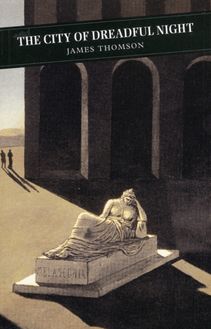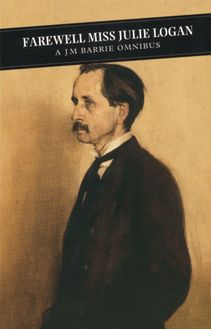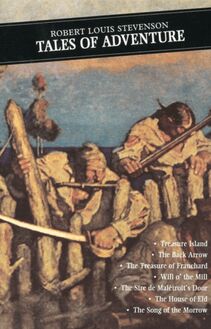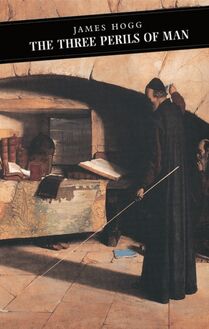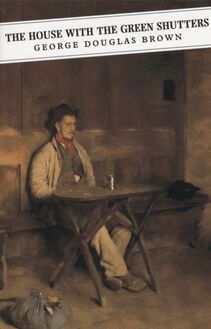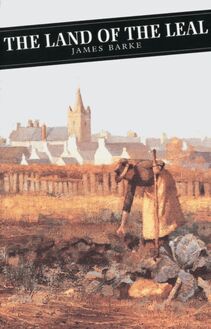Smeddum , livre ebook
441
pages
English
Ebooks
2010
Vous pourrez modifier la taille du texte de cet ouvrage
Obtenez un accès à la bibliothèque pour le consulter en ligne En savoir plus
Découvre YouScribe en t'inscrivant gratuitement
Découvre YouScribe en t'inscrivant gratuitement
441
pages
English
Ebooks
2010
Vous pourrez modifier la taille du texte de cet ouvrage
Obtenez un accès à la bibliothèque pour le consulter en ligne En savoir plus
Publié par
Date de parution
01 juillet 2010
Nombre de lectures
0
EAN13
9781847674982
Langue
English
Publié par
Date de parution
01 juillet 2010
Nombre de lectures
0
EAN13
9781847674982
Langue
English
SMEDDUM
A Lewis Grassic Gibbon Anthology
Edited and Introduced by
Valentina Bold
Contents
Introduction
Acknowledgements
I Scottish Scene
Curtain Raiser
The Antique Scene
Greenden
Smeddum
Forsaken
Sim
Clay
The Land
Glasgow
Aberdeen
Literary Lights
The Wrecker – James Ramsay MacDonald.
Religion
Postlude by Hugh MacDiarmid
II Songs of Limbo
In Exile
Lines Written in a Happy-Thoughts Album
Six Sonnets for Six Months
Her Birthday, 1928
Rhea, Remembered Suddenly
Vision
Dear Invalid
Vimy Ridge: Seven Years After
Renunciation
Her Birthday
Spartacus
A Last Nightfall
Lost
Vignette
Nostalgia: A Parody
A Song of Limbo
Rupert Brooke
Dawn Death
Song
Lenin: 1919
The Unbeloved
At the Last
Réponse
Peace: To the Irene of Kramelis
The Communards of Paris
The Romanticist
On the Murder of Karl Liebknecht and Rosa Luxembourg
When God Died
Nox Noctes
A Communist’s Credo
Dead Love
Verses towards ‘Knowles’ Last Watch’
To Billie on her Birthday
Dust
Song of a Going Forth
Morven
The Photograph
Tearless
At Dusk
Rondel
La vie est breve
On a Vernacular Society
III Polychromata
He Who Seeks
The Epic
The Road
A Volcano in the Moon
The Life and Death of Elia Constantinidos
Cockcrow
Gift of the River
East is West
Vernal
Daybreak
It is Written
The Passage of the Dawn
IV One Man with a Dream
A Stele from Atlantis
The Woman of Leadenhall Street
One Man with a Dream
For Ten’s Sake
Roads to Freedom
First and Last Woman
The Lost Constituent
The Floods of Spring
Thermopylœ
A Footnote to History
V The Glamour of Gold
The Glamour of Gold and the Givers of Life
Mungo Park Attains the Niger and Passes Timbuctoo
Don Christóbal Colon and the Earthly Paradise
The End of the Maya Old Empire
Yucatan: New Empire Tribes and Culture Waves
The Buddha of America
William James Perry: A Revolutionary Anthropologist
VI In Brief
Controversy: Writers’ International (British Section)
A Novelist Looks at the Cinema
Synopsis of America before Columbus
History of the Continents of America before Columbus
Preliminary Precis of a Still Untitled History of the Conquest of the Maya
Brief Synopsis of A History of Mankind
Synopsis of Memoirs of a Materialist
Synopsis of The Story of Religion
Notes for a Stained Radiance Sequel
Notes for Domina
Notes for Three Stories
Notes for The Rooftree
Notes for Men of the Mearns
VII Speak of the Mearns
Notes to Speak of the Mearns
Notes
Glossary
Introduction
Let us go forth and venture beyond the utmost plain! Beyond the utmost beetling crag where wilting sunsets wane!
Beyond the dark, dour valleys where Silence keeps her reign:
Let us go forth!
‘Song of a Going Forth’ by James Leslie Mitchell
JAMES LESLIE MITCHELL was a literary explorer. Along with his alter ego, Lewis Grassic Gibbon, he made imaginative journeys through time, space, and the human psyche. His work is at once distinctively Scottish and universalist in its concerns; he explores traditional means of expression and is, equally, experimental. Because of this, his writing is equally resonant, and significant, for Gibbon’s native North East, for Scotland, and for international audiences. 1
This anthology allows the reader to make a new assessment of Gibbon’s work. It is the most comprehensive collection to date of Mitchell’s prolific output of short stories, essays, poems and synopses. This brings together the full range of his work for the first time since the 1930s. 2 Some pieces will be very familiar. Others are reprinted for the first time since their original publication, or from typescript and manuscript sources.
Seen as a set, the shorter work shows Gibbon’s willingness to take creative risks. Hard-edged polemic is balanced by fantasy and revealing poetry; caustic criticism is set against sympathetic, but truthful, voyages at home and abroad. Explorations of local, national and international identities range through the past, present and future. Boundaries between fact and fiction are blurred. The confidence and range of Gibbon’s creativity reveals him in his true colours, as a distinctively Scottish writer of international importance.
The present collection is a companion to the longer fiction and prose in print, as part of Gibbon’s current, well-deserved revival. 3 Gibbon constantly refined his ideas. He was a meticulous planner, as the synopses show, and redrafted his poetry at least once (usually with minor, but always significant, changes). The uncompleted histories, as much as the short stories, reveal a constant reworking of themes, and a quest for new ideas. This anthology also shows Gibbon’s growth and development, during the Scottish literary renaissance. ‘The Speak of the Mearns’, for instance, goes beyond Sunset Song in considering rural identities in the area where Gibbon was raised. ‘The Woman of Leadenhall Street’ is a more mature response to the theme of cultures in conflict explored in Three Go Back (1932). Recurrent themes and motifs are apparent: the way communities change over time, for instance; the foolishness, and also the vulnerability of folk.
Politically, and culturally, Gibbon is extremely astute. His work reflects a range of (very broadly) Communist beliefs, as discussed in detail by William Malcolm in A Blasphemer and Reformer (1984). Gibbon exemplifies the forward-thinking Scot of the early twentieth century. He identifies Scotland’s role in the modern world, and its possibilities for the future, and Scottish perspectives pervade Gibbon’s work. His childhood experiences in Kincardineshire, and his time as a reporter in Aberdeen and Glasgow, irrevocably shaped Gibbon’s consciousness. This is particularly apparent in Scottish Scene; or, the intelligent man’s guide to Albyn (1934), a creative and acerbic tour de force, co-edited with Hugh MacDiarmid, which set out to define and challenge the nation.
Gibbon was one of the last of the Scottish autodidacts. Despite an adequate education at Arbuthnott School and Mackie Academy, Stonehaven, he shows a range of self-acquired knowledge, and an ambition of vision which resembles James Hogg’s. Just as Hogg deals with topics as diverse as Borders shepherding and polar exploration, so Gibbon knows no limits in his subject matter, writing with ease about modern and future cultures, archaeology and anthropology, contemporary and historical politics, gender and sexual relationships, religious and class structures. He is as happy (if not always as convincing) in historical treatments of the Maya, as he is in the Mearns.
The first section of the present collection includes all of Gibbon’s contributions to Scottish Scene . They are amongst his finest stories and essays. MacDiarmid’s ‘Postlude’ is also included, as it identifies the book’s aim to find new Scottish prophets (perhaps the co-authors). MacDiarmid and Gibbon, as the ‘Curtain Raiser’ explains, engage in a form of counterpoint. Their contributions alternate, as the book shifts, elegantly, between past to present; description and analysis; fiction and documentary. The two writers, at times, contradict each other, viewing a ‘composite’ Scotland, from two different ‘angles’ (Gibbon’s ‘village near London’; MacDiarmid’s home in the Shetlands). Equally, although this is not stated, the two writers’ unique Scottish personae, grounded in culturally distinct areas – the North East and the Borders – foster differing perspectives.
Due to the episodic structure of the book, though – similar to a traditional tale-telling session, held over several nights – Gibbon’s essays and stories work well on their own. These ‘scenes’ (in both the dramatic and argumentative sense), define Scotland and Scottish identity in all its dimensions: urban and rural; political, cultural and literary. Local affiliations are proclaimed without too much sentiment. Literal observations, anecdotes and stories intermingle, sometimes within the same piece. In the original volume the essays by the two authors offer implicit comments on the stories, just as the stories illustrate the essays. In this collection, however, it’s useful to look at Gibbon’s pieces in thematic groups.
‘The Antique Scene’ is reviewed idiosyncratically, but with as much confidence as ‘The Unfurrowed Field’ in Sunset Song . As a diffusionist, Gibbon’s history is a series of lows, highs and turning points, governed by the overarching principle that: ‘barbarism is no half-way house of a progressive people towards full and complete civilization: on the contrary, it marks a degeneration from an older civilization’. 4 An eclectic group of heroes and villains is identified, unified by an ‘awareness of blood-brotherhood and freedom-right’, and characteristic of Gibbon’s work. The Picts represent Scotland’s Golden Age whereas the Celts are gangsters. Wallace, Cromwell, Lincoln and Lenin are grouped together for their republican sympathies and Knox, too, is presented as a revolutionary, who wandered Europe in exile, like Lenin. The Covenanters are ‘the People’s Church’. Gibbon was raised close to Dunottar Castle with its Covenanters’ prison, the Whigs’ Vault. Perhaps, like Hogg in The Brownie of Bodsbeck (1818), he draws on oral tradition in his depiction of the ‘criminal degenerate’ behaviour of those who opposed the Covenanters. Gibbon calls for a rewriting of Scottish history, to celebrate: ‘the lives of millions of the lowly who wiped the sweats of toil from browned faces and smelt the pour of waters by the Mull of Kintyre and the winds of autumn in the Grampian haughs’. This is a powerful statement, setting the scene for the stories which follow and highlighting Gibbon’s agenda. The stories – ‘Greenden’, ‘Smeddum’, ‘Sim’ and ‘Clay’ – celebrate, and analyse, the life of ordinary folk in No
